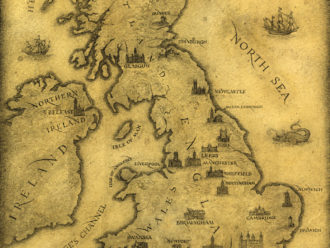The Covid pandemic has fuelled exponential growth in the high-yield debt market, but what should bargain-hunting investors consider when picking a fallen angel?
Does anyone fancy committing to a seven-year cruise ship journey? It might not sound the most appealing offer considering the current climate, but for many fixed income investors it proved an attractive prospect.
Cruise ship operator Carnival Cruises collected more than $6bn (£4.5bn) from issuing seven-year bonds back in April. Despite forecasting a “zero revenue scenario”, the offer was over-subscribed and is part of around $10bn (£7.6bn) that the cruise ship giant has raised this year to keep it afloat as bookings dried up.
A double-digit coupon partially secured against the company’s fleet could explain the bonds’ appeal, but it also highlights the dramatic changes that the fixed income markets have seen this year.
Even before the Covid pandemic arrived, bonds downgraded from investment grade to junk, known in the industry as fallen angels, were on investors’ radars.
Madeleine King, Legal & General Investment Management’s co-head of pan-European investment-grade research, warned at the end of last year, that some $460bn (£369bn) of investment-grade debt was at risk of being downgraded to junk, or high yield as it is increasingly becoming known.
The widespread economic damage caused by the pandemic accelerated this trend exponentially. In 2020, a record $640bn (£484bn) worth of bonds have been downgraded from investment grade, according to S&P Global Ratings. These included big name brands such as Heinz, Kraft, Marks & Spencer, British Airways, Next, Virgin Money and ITV.
By the middle of this year, roughly half of Europe’s and the US’ investment-grade bonds had a BBB rating, indicating the potential for further growth in the fallen angel universe.
But the deterioration in credit quality has not necessarily caused such companies problems in raising capital, as Carnival Cruises illustrates.
While it appeared at the outbreak of the crisis that bond markets could dry up, central banks swiftly responded with an unprecedented wave of quantitative easing.
A particular turning point was the Fed’s pledge in March to start purchasing high-yield bonds. Since June, the US central bank started buying large volumes of high-yield ETFs and increasingly debt from individual issuers.
As a result, even companies that no longer had an income stream or reported a sharp profit decline could borrow from the international debt markets. Corporates, excluding banks, have issued a record $2.1trn (£1.6trn) in bonds this year, which in the US has seen corporate debt rise to 90% of GDP, the Institute of International Finance says.
Headaches and opportunities
The surge in downgrades could cause headaches for investors particularly insurers or those with an investment-grade mandate who could be forced sellers in the event of a downgrade.
Watching the risks of potential downgrades closely is Anand Kwatra, an actuary at Phoenix. For the life consolidator and its peers in the insurance industry, holding downgraded debt could potentially become cash intensive, as Kwatra explains.
“As part of the Solvency II capital requirements, we have to hold capital on these investments and a lot of our illiquids are very highly rated, AA or A. But on the liquid side we have a range of ratings, from AAA all the way down to BBB,” he says.
“But like all insurance investors, we have very painful capital requirements for BBB assets. If we held a BBB-rated corporate bond with a 15-year maturity, we would have to hold a lot more capital than for an investment-grade bond.”
In addition, insurers are also prevented from taking benefits on improved spreads. “For us, the problem is really acute when BBBs get downgraded to high yield and the capital requirements increase significantly.
“That’s because the regulator puts a cap on the amount of benefit we can take, so the spread cannot exceed that of a BBB investment,” Kwatra says. “So even if the spread went up, the amount of spread we could take credit for in the balance sheet would be restricted. This is why a potential downgrade from BBB to sub-investment grade would be a key concern for insurers.”
Kwatra’s team therefore monitors any potential downgrade risk and attempts to sell before the downgrade occurs.
Similar challenges could also affect pension funds and fund managers with an investment-grade mandate, who might find themselves at the risk of becoming forced seller.
But, as the saying goes, one man’s problem is another man’s opportunity. Kevin Wesbroom, a professional trustee at Capital Cranfield, says that for some pension fund investors, the growing universe of fallen angels could be of interest.
“On the one hand we have clients who are trying to generate stable income streams as part of a CDI-type strategy,” he says. “Not surprisingly, if you buy things like government bonds, you would be lucky if you get positive income streams at all. “So inevitably, those kinds of people are forced to look further away to high-yield debt, and we are starting to see them trickle into these asset classes.
“But it’s quite tricky. The whole point of CDI is that you want certainty of the cash-flows but unfortunately you can’t get the income of high yield without very serious default risks.
“On the other side of the spectrum we have clients who are looking for return seeking assets and fallen angels would definitely come under the category of alternative return seeking assets. But either way, the challenge is still the same. It is a bit like catching a falling knife. You might get it right, but you might well get your hands cut along the way,” Wesbroom warns.
If investors get it right, their bet could pay off. Annualised returns over the past five and 10 years illustrate that, in general, fallen angels tend to outperform the original high-yield universe. This is a factor that has not escaped the attention of Stuart Trow, credit strategist and trustee at the European Bank for Reconstruction and Development.
“When you look at the risk-adjusted returns by probability of default ratings, almost invariably, BB-rated debt comes out at the sweet spot because it is still decent quality but there are a lot of people with investment-grade mandates who can’t touch it,” he says.
Liquidity and covenant risks
Having said that, past performance is not always an indicator of future returns, particularly when the future continues to be dominated by the disastrous economic consequences of the pandemic.
For Trow, size is a key concern when it comes to fallen angels, with the average size of issuers in the investment-grade universe being far larger than that of the high-yield universe. One example is the downgrade of General Electric back in April.
“People were really concerned about General Electric,” Trow says. “They have funding needs for billions and billions and if the market started to get cold feet, you just couldn’t fund these volumes in the high-yield market in the same way that the investment-grade market could.”
The difference in size has implications for liquidity, Trow adds. “When market conditions are good, you can get bigger deals done, even sub-benchmark deals (where the issuer is not included in a benchmark index). To be included in the major indices, which a lot of fund managers like, the issuance volume would have to be at least 500 million.
“If the market is really strong, like it was a month or two ago, they would be far more inclined to go for the smaller deals because they felt they could get a bit more yield out of it,” he adds. “But as soon as things get a bit difficult, you want the safety of liquidity. If you want to be able to sell, with a benchmarked deal, you would know there’s a market there. But if it’s a 100 million deal and you’ve got 50 of it, there’s not that many people to sell it to.”
These liquidity risks might not be an immediate concern for investors who intend to hold the debt on a buy-and hold basis as part of a CDI strategy. They should, however, be considered by return-seeking investors, Wesbroom says. “It’s one thing to get into these things, another to get out of them,” he adds.
Another factor to consider when investing in fallen angels is the covenant package. Unlike traditional high-yield bonds, which tend to face more stringent covenant requirements, investment-grade companies tend to face less stringent rules to underwrite their debt, even if their overall credit rating changes.
For example, a company might still be able to sell some of its assets or pay dividends and make investments outside the group, despite its credit standards having deteriorated.
In the case of Carnival Cruises, this meant that the cruise ship giant was able to sell part of its fleet throughout the year, despite its bonds being secured against the assets. Similarly, a retail giant like Marks & Spencer, having previously been labelled investment grade, might be able to sell some of its stores to generate additional cash, at a risk to its creditors.
For Wesbroom, the additional factor of the pandemic means that default risks have become harder to predict. “The challenge is, how do you spot the companies that will survive from the ones that will go to the wall?” he adds.
“It is a different type of analysis from the one many managers have been used to doing. It requires making some tough judgement calls if a business will be around post-Covid or not.”
Treading carefully
For investors who can stomach this risk, fallen angels might have something to offer, Wesbroom and Trow argue, but investors should be careful how and where to include them in their portfolio.
“Fallen angels could be part of a barbell strategy, whereby you balance the really risky stuff with much safer assets,” Trow says. “I think that could work.”
For Wesbroom, part of the danger is that investors are increasingly desperate to secure returns. “When half of the available bond universe is trading in negative territory, people start to get desperate to find things to invest in,” he says.
“The danger here is that in a lot of cases managers are starting to get into areas where they haven’t got the skills to make these quite complex evaluations,” Wesbroom adds. “I would be very nervous as a buyer of services. I would want to see that the manager in question has a fairly serious track record rather than just seeing it as the next shiny thing they’re chasing after.”
He concludes that high yield, and fallen angels in particular, is an area best kept to investors with expertise. “This is very much an area for external managers. It is an area where I would have more confidence in a fiduciary manager being able to do the research necessary to identify either the right managers or the underlying assets.
“It’s a classic illustration of where you need in-depth analysis that I believe most fiduciary managers would bring to the process. You would have to be either very brave or foolish to try and go into this on your own.”




